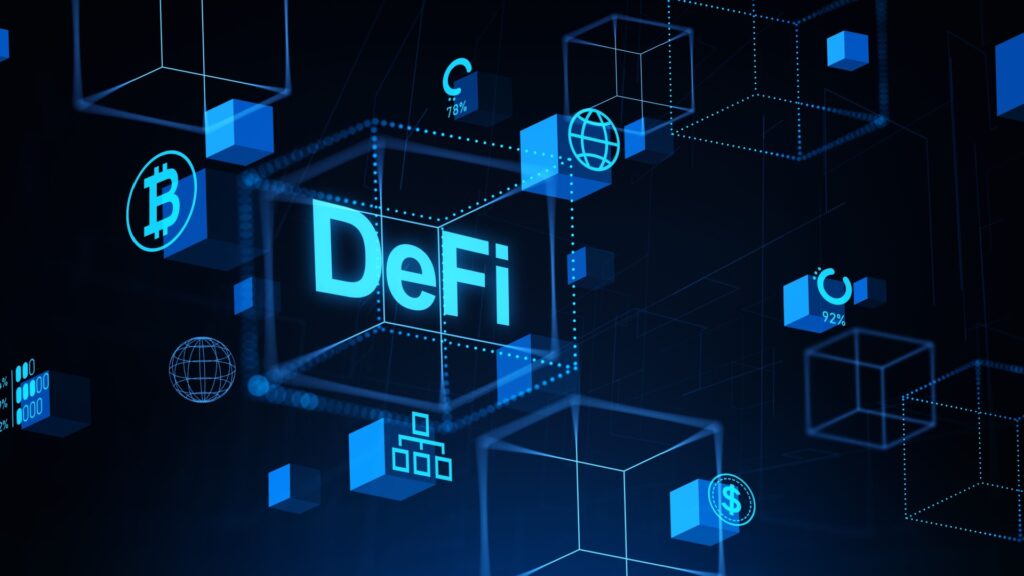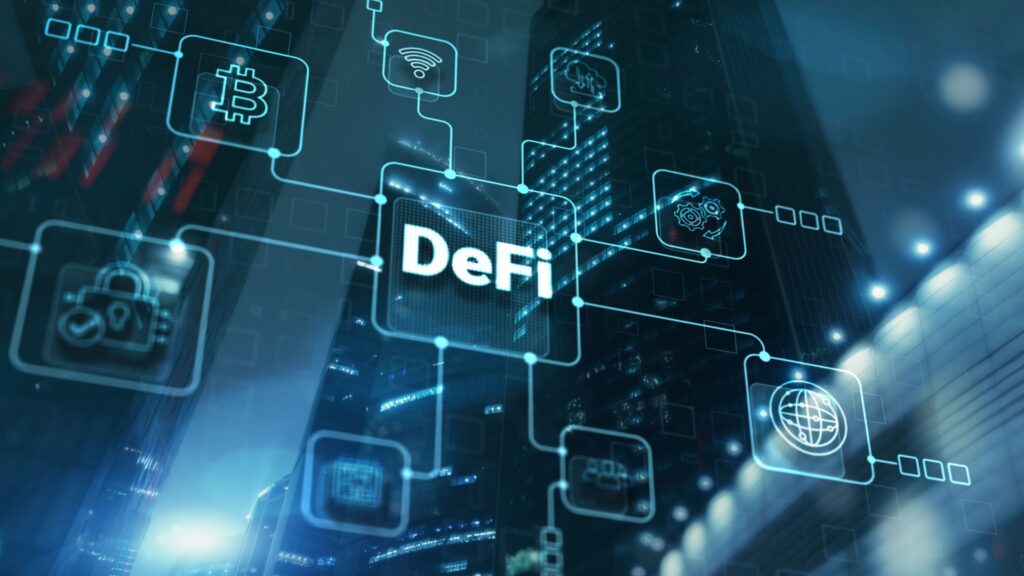DeFi Flash Credit (instant loans) is an innovative financial tool in the world of decentralized finance (DeFi) that allows users to borrow funds for a very short period without the need to provide any collateral. This unique opportunity opens new horizons for traders and investors, enabling them to use credit funds for various purposes, from liquidity to asset reorganization.
How DeFi Flash Credit Works
Flash Credit operates on a "single transaction" principle. When a user takes out a loan, the amount of money is instantly provided and used. However, by the end of that single transaction, the loan must be repaid. This is achieved through smart contracts that are automatically executed when specified conditions are met. The program checks if the condition has been fulfilled (the loan repaid) before completing the transaction. This approach minimizes the risk for the lender because, if the borrower fails to repay, the transaction is canceled, and no assets are transferred.
The primary mechanism behind Flash Credit is the use of liquidity in DeFi protocols. Borrowers can use these loans for transactions when the same asset is traded at different prices on different platforms. A user takes out a Flash Credit from one place, buys the asset, and then sells it on another platform at a higher price—thus making a profit without needing to hold capital or collateral. This creates a dynamic that makes the market more efficient and liquid, although it requires quick reactions and precision from traders.
Differences Between DeFi Flash Credit and Traditional Collateralized Crypto Loans

Unlike traditional collateralized crypto loans, Flash Credit offers unique advantages that are worth exploring in more detail.
1. Lending Mechanism
The primary difference when it comes to Flash Credit lies in their operational mechanism. These loans are issued and repaid within a single blockchain transaction. The user can borrow funds, utilize them for arbitrage or other financial maneuvers, and immediately return the loan without leaving a debt burden. In traditional crypto loans, on the other hand, the borrower provides assets as collateral, which the lender must evaluate and release only after full repayment.
2. Collateral Requirements
Traditional collateralized lending requires borrowers to provide assets as security, which serves as protection for lenders. This can involve significant costs and resources. Flash Credit enables users to access liquidity without locking up their funds, making them more accessible and flexible for short-term operations. However, this freedom comes with a higher risk for lenders since they rely on the transaction's conditions being met.
3. Loan Terms
Flash Credit is designed for immediate use, making it ideal for short-term deals like arbitrage. Traditional collateralized loans may have longer terms, which is not always suitable for active traders. Instead, Flash Credit allows users to capture market opportunities in real-time, a key advantage for those aiming for quick reactions to price changes.
4. Application
Flash Credit is mostly used for active trading and arbitrage, while traditional collateralized loans may be more suited for long-term financing and personal needs. This difference in purpose determines which products might be more convenient for different types of users.
Despite the advantages of instant loans, it's important to be aware of their risks and to use them carefully. For those seeking quick liquidity and market opportunities, Flash Credit can be a valuable tool, although traditional collateralized loans remain a reliable option for more stable financing.
Examples of DeFi Flash Credit Platforms
Aave is one of the leading decentralized platforms for lending and borrowing, offering the unique feature of Flash Credits. Users can take out unsecured loans for the maximum number of blocks on the Ethereum network. This enables complex financial operations, such as arbitrage or shifting a single position between platforms.
MakerDAO, well-known for its stablecoin token DAI, also provides the option to take out Flash Credits. Users can instantly borrow DAI under conditions that allow them to use tokens in other DeFi protocols for arbitrage trades or asset reorganization.
dYdX is a decentralized platform for margin trading and lending that also supports Flash Credits. dYdX gives users the ability to borrow funds for instant trading, as well as to execute more complex strategies, such as hedging and arbitrage.
Risks of DeFi Flash Credit

Despite its advantages, Flash Credit also comes with certain risks. Since it does not require collateral, lenders rely on the execution of smart contract conditions. Issues with the code or platform attacks can lead to losses. Furthermore, the high competition in the DeFi space can reduce the profitability of trades, requiring traders to have strong analytical and strategic skills.
Thus, the concept of Flash Credit revolves around instant liquidity, rapid deal execution, and smart contracts that set the conditions for a secure and efficient lending structure. These tools enable users to make the most of decentralized finance opportunities, but they also require caution and a deep understanding of the risks associated with this innovative technology.
What Is a Flash Credit Attack?
On one hand, decentralized finance (DeFi) has become the epicenter of financial innovation, but it has also brought new security risks. One of the most discussed attack types in this area is the flash credit attack, which leverages instant loans offered by DeFi protocols. Attackers can exploit this mechanism to achieve their goals. For example, most flash credit attacks are aimed at manipulating asset prices to take advantage of platform or smart contract vulnerabilities.
Such attacks often involve several steps. First, the attacker takes a flash credit to acquire a significant amount of the target asset, typically a low-liquidity one. Then, they use this asset to temporarily inflate its price on a decentralized exchange. This can happen through authoritative trades or by simply creating the illusion of high liquidity. Once the asset's price rises, the attacker starts to sell it off, profiting from the price difference. After that, they repay the flash credit, return the funds, and leave the platform with a falsified asset price.
Another crucial aspect of these attacks is that they are often linked to vulnerabilities in smart contracts that have not been thoroughly tested. Attackers can exploit bugs in the code to drain funds from protocols or manipulate markets. These attacks highlight the importance of securing smart contracts in DeFi and using audits to reduce risks.
Nevertheless, flash credit attacks not only harm platforms but also raise concerns about the security of the entire DeFi ecosystem. Investors and users should be aware of the risks associated with these new financial tools and carefully evaluate the platforms and protocols they interact with.
Flash credit attacks have become a hot topic in the world of decentralized finance (DeFi) and have drawn the attention of experts and users alike due to their potential to cause significant financial losses. These attacks, exploiting vulnerabilities in smart contracts, can occur without requiring collateral. This article will discuss two notable cases that demonstrated the risks associated with flash credits: the attack on Alpha Homora and the attack on PancakeBunny.
Two Notable Examples of Flash Credit Attacks

The attack on Alpha Homora occurred in February 2021 and demonstrated how a vulnerability in a smart contract can be exploited for malicious purposes. The attacker used a flash credit to manipulate token prices and interact with the liquidity provided to Alpha's protocol.
The attack proceeded as follows: the attacker took out a flash credit to purchase a significant amount of tokens used in Alpha. By increasing the volume of these tokens on the market, they were able to artificially raise their price. The attacker then sold the tokens, profiting from the price difference. Although the funds were returned to the smart contract, the platform suffered significant damage in terms of lost user trust and subsequent financial losses.
The attack on PancakeBunny happened in May 2021 and became one of the most notorious flash credit attacks carried out on the Binance Smart Chain platform. The attacker used a flash credit to manipulate the prices of tokens in PancakeBunny's liquidity pool, leading to substantial losses for both users and the platform itself.
In this case, the attacker took out a flash credit, bought a large quantity of tokens, significantly driving up their market price. They then leveraged this temporary price increase to boost their positions in the liquidity pool. When the token price was at its peak, the attacker sold the tokens, repaid the flash credit, and made a huge profit. However, this caused a collapse in market prices, ultimately affecting all market participants and leading to widespread losses.
These attacks highlight the importance of ensuring the security of smart contracts in the DeFi space. Despite the attractiveness and flexibility of flash credits, they also carry significant risks. To mitigate these risks, developers and users must pay special attention to smart contract audits and employ security measures like limits on flash credit usage or more complex transaction verification mechanisms. Recognizing these risks and taking a careful approach to DeFi protocol usage can help prevent such incidents in the future.
Nevertheless, Flash Credit remains an intriguing tool for those looking to optimize their investment strategies. It allows for faster financial operations and cost minimization, which can attract new users to the world of decentralized finance. As the ecosystem continues to grow, it is clear that Flash Credit will remain a key topic of interest, drawing attention from both beginners and seasoned investors.